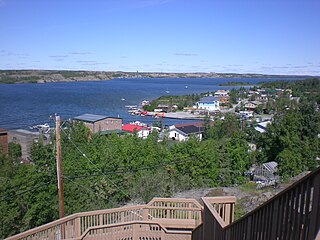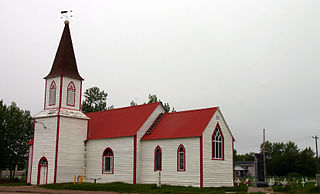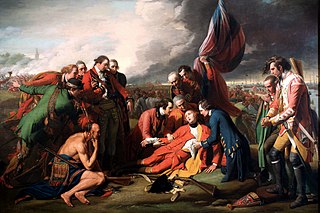
The Hudson's Bay Company is a Canadian retail business group. A fur trading business for much of its existence, it became the largest and oldest corporation in Canada, and now owns and operates retail stores across the country. The company's namesake business division is Hudson's Bay, commonly referred to as The Bay.

Yellowknife is the capital, largest community, and only city in the Northwest Territories, Canada. It is on the northern shore of Great Slave Lake, about 400 km (250 mi) south of the Arctic Circle, on the west side of Yellowknife Bay near the outlet of the Yellowknife River.

Zellers was a Canadian discount store chain founded by Walter P. Zeller in 1931. It was acquired by the Hudson's Bay Company (HBC) in 1978, and after a series of acquisitions and expansions, peaked with 350 locations in 1999. However, fierce competition and an inability to adapt during the retail apocalypse resulted in Zellers losing significant ground in the 2000s, and ultimately closing all stores in 2013.

Hudson's Bay, also known as The Bay, is a Canadian luxury goods department store chain. It is the flagship brand of the Hudson's Bay Company (HBC), the oldest, largest and longest-surviving company in North America as well as one of the oldest and largest continuously operating companies in the world.

The Robert Simpson Company Limited, commonly known as Simpson's until 1972, then as Simpsons, and in Quebec sometimes as Simpson, was a Canadian department store chain that had its earliest roots in a store opened in 1858 by Robert Simpson.

Lord & Taylor was the oldest surviving brick-and-mortar department store chain in the United States. In business since 1826, the brand closed all its physical retail locations in the aftermath of the COVID-19 pandemic. The brand was acquired by Saadia Group and was relaunched online-only in the fall of 2022.

Moose Factory is a community in the Cochrane District, Ontario, Canada. It is located on Moose Factory Island, near the mouth of the Moose River, which is at the southern end of James Bay. It was the first English-speaking settlement in lands now making up Ontario and the second Hudson's Bay Company post to be set up in North America after Fort Rupert. On the mainland, across the Moose River, is the nearby community of Moosonee, which is accessible by water taxi in the summer, ice road in the winter, and chartered helicopter in the off-season.

Henry Morgan & Company was a Canadian department store chain founded by Henry Morgan in 1845. The first store was located in Montreal, and expanded to include 11 stores in Ontario and Quebec before being bought by Hudson's Bay Company in 1960. The stores in Ontario were converted to Hudson's Bay Company stores that year and renamed The Bay in 1965; the remaining Morgan's stores in Quebec were renamed La Baie in 1972.

The Merchandise Building is a loft conversion of a former warehouse located in downtown Toronto on Dalhousie Street, near the campus of Toronto Metropolitan University and the Toronto Eaton Centre. Built in various stages from 1910 to 1949 for the Simpson's department store, and later owned by Sears Canada after Simpson's demise, the Merchandise Building at over 1,000,000 square feet (93,000 m2) is one of the largest buildings by floor area in downtown Toronto. It is an example of the early 20th-century industrial Chicago School architectural style.

Behchokǫ̀, officially the Tłı̨chǫ Community Government of Behchokǫ̀, is a community in the North Slave Region of the Northwest Territories, Canada. Behchokǫ̀ is located on the Yellowknife Highway, on the northwest tip of Great Slave Lake, approximately 110 km (68 mi) northwest of Yellowknife.
FIELDS Stores Ltd. is a Canadian discount store company owned by FHC Holdings, with 67 locations in British Columbia, Alberta, Saskatchewan, Manitoba, and the Northwest Territories.

The history of the Northwest Territories covers the period from thousands of years ago to the present day. Prior to European colonization, the lands that encompass present-day Northwest Territories were inhabited for millennia by several First Nations. European explorers and fur traders began to explore the region since the late-16th century. By the 17th century, the British laid claim to both the North-Western Territory and Rupert's Land; and granted the Hudson's Bay Company a commercial fur trade monopoly over the latter region.
Old Fort Providence, located near the mouth of Yellowknife Bay, Northwest Territories, Canada, was one of the first fur trading outposts on Great Slave Lake. Peter Pond of the North West Company first proposed trading with the Dene around Great Slave Lake in 1786. In 1789, Alexander Mackenzie initiated a period of trade with the Yellowknives and Tłı̨chǫ Dene and instructed his assistant, Laurent Leroux, to start a trading post in this area. The post was not a major centre for fur trading and was used primarily as a supply centre for other, more important trading posts or expeditions. It served, for example, as a base of supply for Sir John Franklin's Coppermine expedition towards the Arctic Ocean in 1820. It was located within a productive fishery used for generations by the Dene around Yellowknife Bay and helped supply meat and fish for traders at Great Slave Lake. The Hudson's Bay Company took over the post in 1821 after the demise of the North West Company, but the settlement was in decline and it closed in 1823. The buildings have long since decayed but the ruins were excavated in 1969-1971.

Hudson is an unincorporated place and community in the municipality of Sioux Lookout, Kenora District in northwestern Ontario, Canada. It is located on Lost Lake on the English River in the Nelson River drainage basin.
Stephen Angulalik was an internationally known Ahiarmiut Inuit from northern Canada notable as a Kitikmeot fur trader and trading post operator at Kuugjuaq, Northwest Territories. His stories and photos were carried by journals and periodicals worldwide.
This timeline of Yellowknife history summarises key events in the history of Yellowknife, a city in the Northwest Territories, Canada.
Richard Alan Baker is an American business executive. He is the Governor, CEO, and Executive Chairman of Hudson's Bay Company (HBC) and executive chairman of each of HBC's eight portfolio companies. He is also the owner of National Realty and Development Corp. (NRDC), a US-based private real estate development and investment company, and is the Chairman of the Retail Opportunity Investments Corp. (ROIC), a public real estate company.

Sutherland's Drug Store is a small family-owned drug store in Yellowknife, Northwest Territories, Canada. The company was established in Fort McMurray, Alberta by Angus Sutherland in 1918 and expanded into the Yellowknife gold fields during the rush in 1938. Its first store was located in Old Town Yellowknife and was managed by Walter Hill and Keith Miller. The store closed during the war but reopened and expanded following the post-war gold boom. In 1948, the Old Town store was physically moved to the new downtown development and a second store was built in Old Town. Two stores were run by the chain into the 1950s. In 1951, Doug and Wilma Finlayson and A.L. Blackberg bought the Sutherland chain following the death of Angus Sutherland. In 1954, the Old Town store closed; in 1956, the current downtown store was built and the original store brought up from Old Town years previous was rented to commercial tenants. Sutherland's Drug Store continues to operate today in its expanded storefront and successfully competes with larger department stores in Yellowknife.

The Bank of Toronto is a historic cabin located in Old Town, Yellowknife, Northwest Territories, Canada. The log cabin was constructed in 1939 by John Stakson, an expert log builder, in the commercial district of the Yellowknife community for use as a residence. In October 1944, the Bank of Toronto purchased the cabin and opened a new bank for the community, joining the Bank of Commerce. The bank arrived in Yellowknife in response to new financial activity brought about by the intersection of gold in shear zones at Giant Mine and the resulting staking spree around the region. As the gold rush ended, the volume of business was insufficient to keep the bank profitable, and the Bank of Toronto closed this branch in August 1951.

Canadian Pacific Airlines built this modern float base on the waterfront of Yellowknife, Northwest Territories, Canada in 1946 to serve as an office, staff housing, and mooring for its fleet of bush planes. Yellowknife was a very active aviation centre during the late 1940s as a result of renewed gold exploration after World War II. The aviation industry however was very tumultuous and many bankruptcies and mergers occurred throughout history, and many airline companies came to use this float base in Yellowknife, including: Canadian Pacific Airlines (1946–1949), Yellowknife Airways (1949–1951), Associated Airways Limited (1951–1956), Pacific Western Airlines (1956–1966), Northward Airlines (1966–1978), and Air Dogrib (1978–1980s).















